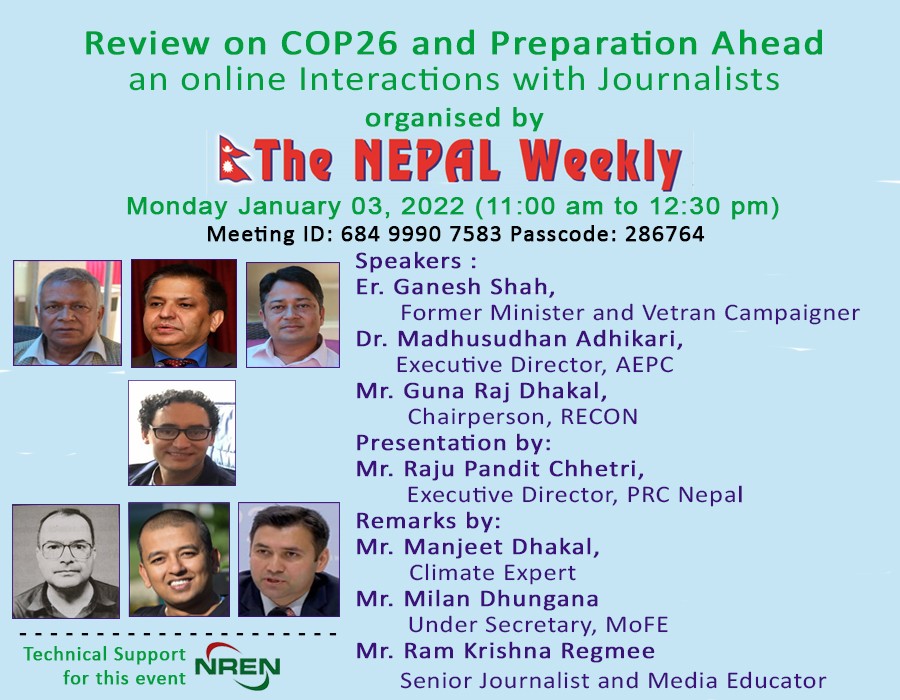 The Nepal Weekly
The Nepal Weekly  June 7, 2022
June 7, 2022By Purna N. Ranjitkar l
Waste generated by every household by every action every day has been one of the unmanaged problems of the Kathmandu Valley. Other cities and even rural settlements have similar problem in Nepal. The climbing route to Mount Everest and other high Himalayan peaks also have garbage problems. Many mega cities in the world alike are facing the same problem while a number of mega cities have well managed and efficient mechanism to manage waste.
The Kathmandu Valley is a cluster of 21 local units (2 metropolitan cities, 16 municipalities and 3 rural municipalities).
The valley produces nearly 1200 tonnes of garbage every day as domestic waste, industrial waste, chemical waste, health institution related waste.
The existing waste management system in the Kathmandu Valley is collection of the garbage form certain locations or cluster of households, hotels, restaurants, hospitals, or institutions and send to dumping site to dump them.
The dumping site at Sisdol has been filled up, and the government is required to allow use next site for sustainable waste management produced in the Kathmandu Valley. An alternative to existing site has been prepared at Bancharedanda which lies 4 km farther from Sisdol at the border of Nuwakot and Dhading districts. The proposed Bancharedanada landfill site is expected to hold waste for at least 20 years.
Bancharedanda dumping site is spread to an area of 1792 Ropanis (around 91 hectares). The government had spent Rs. 1.9 billion to construct the site. This site is equipped with sanitary landfill system also. That means toxic leachate which percolates from the waste will be treated before they are discharged into rivers. The Bancharedanda site was supposed to start using from a few months back.
Waste collection in the Kathmandu Valley has been stopped these days as locals of Sisdol and surroundings are obstructing demanding better management and compensations for their loss and damages.
The newly elected Kathmandu Metropolitan City (KMC) Balen Shah, Deputy Mayor Sunita Dandol and team are seriously working out on solving the waste management problem. The locals Sisdol and surroundings are obstructing to transfer waste to the dumping site. The mayor requested locals to cooperate underling that their demand will be addressed well. The modern technology available will be utilised to reduce the risks.
Some solutions for waste management have been discussed in government and peoples levels where professional and commoners have their views. The waste generate should be burned through a sophisticated incineration technology is one viable solution, some opine stressing that modern technology escape air pollution. But experts argue that that is not a right solution as burning cannot be pollution free. People also say that segregation at the source is the right solution which local authorities can make mandatory and residents must be equally sensitive. That can be truly right solution if residents can manage at their residents to segregate responsibly. That is remote in a practical approach as majority of population have very small space to live cannot be able to manage accordingly. The ward level administration may coordinator for the residents to be truly responsible. Thirdly, some professionals opine to change the mode of transportation and carry out entire volume all waste generated every day by installing a ropeway system. The activities at the dumping site which will segregate materials to reuse, to recycle, use as waste as materials to generate energy as bio-gas and bio-fertilisers in a larger volume.
Transporting goods by Ropeway technology is not new in Nepal. The technology was introduced in the country nearly 100 years ago. However, there are short Ropeway systems in operation these days. The cable-cars operated as Manakamana Cable-car and Chandragiri Cable-car are well profiting businesses. Likewise, Kuri Cable-car and Annapurna Cable-car are emerging businesses.
The fossil fuel transportation is being replaced by electric transportation globally. Harmful impact such as negative effect to nature and environment, climate change effects, human health are the main reasons to prioritise electric transportation systems. For Nepal, it will generate enough electricity to use in transportation system in a few years’ time. This will reduce burning of fossil fuel which the country has to import.
Installation of Ropeway system is easier and economic. The operational cost is also nominal in comparison to systems operated by fossil fuel. The expertise in Ropeway technology is now available in Nepal. The experts had proved capabilities in survey, design, installation and repair and maintenance.
Therefore, mode of transportation and technical interventions at the dumping site may be advised to applicate.
However, some short term solutions will still need to consider which support better management of waste generated in the Kathmandu Valley. Waste management at ward levels may be a good solution for short term management.

